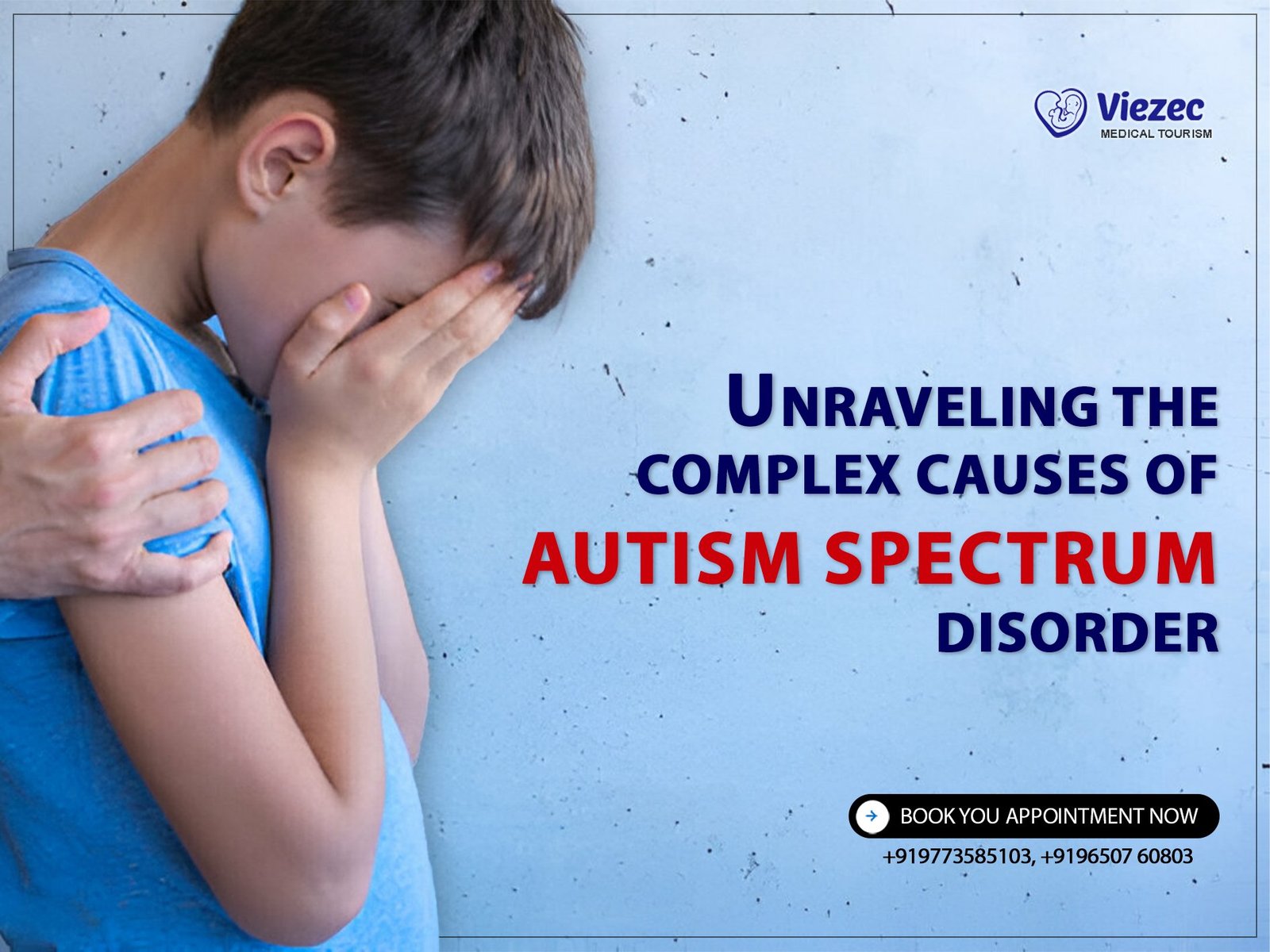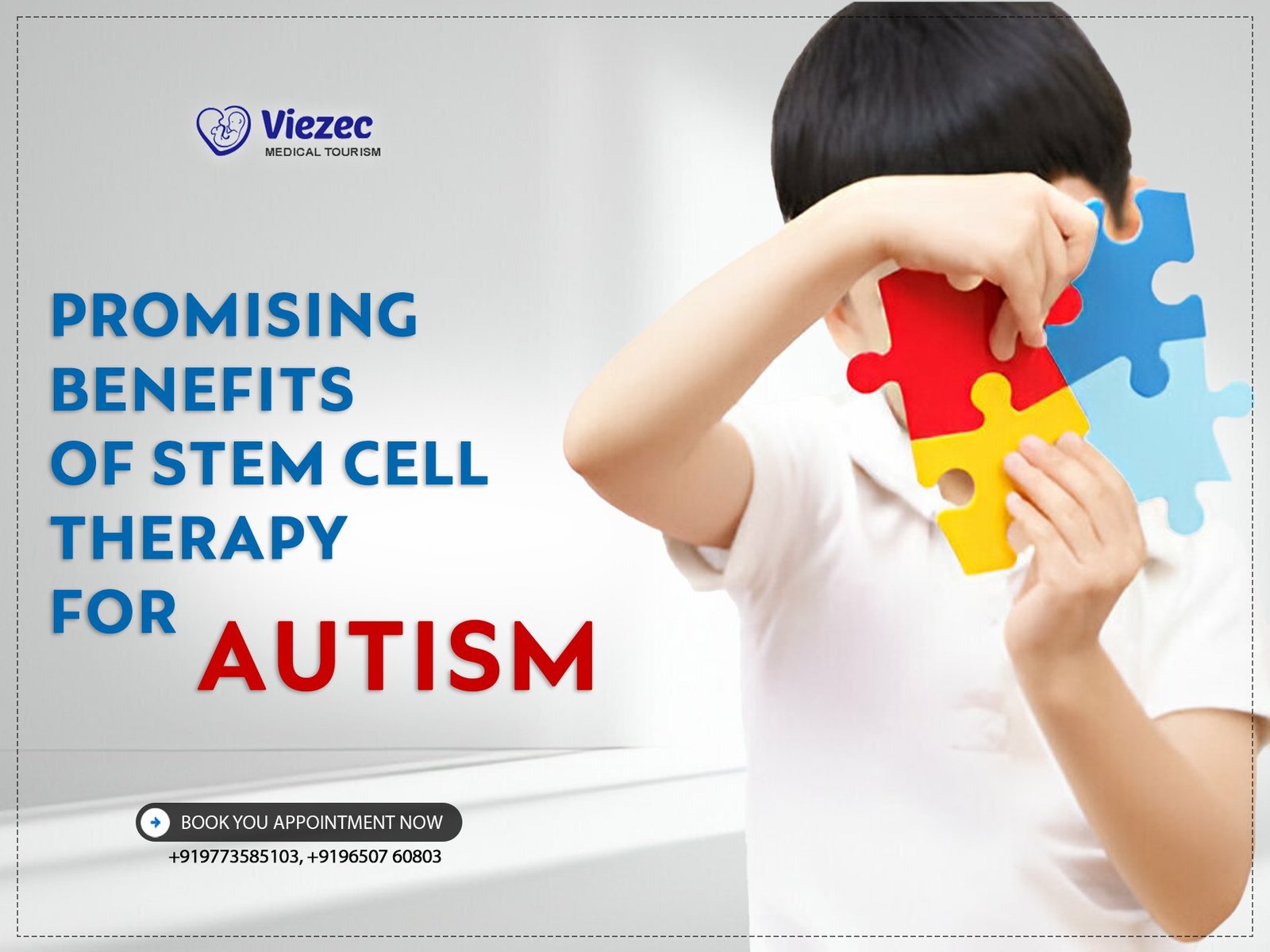Autism Spectrum Disorder (ASD) is a complex neurodevelopmental condition characterized by challenges in social interaction, communication, and repetitive behaviors. Understanding the causes of ASD is critical for developing effective interventions and treatments. This article explores various factors contributing to the development of ASD, ranging from genetic influences to environmental exposures and neurobiological mechanisms.
Introduction to Autism Spectrum Disorder (ASD)
What is Autism Spectrum Disorder?
Autism Spectrum Disorder encompasses a range of conditions characterized by difficulties in social interaction, communication, and repetitive behaviors. Individuals with ASD may exhibit a wide spectrum of symptoms and abilities, leading to the term “spectrum.” This variability underscores the complexity of the disorder and the need for personalized interventions.
Prevalence of ASD
The prevalence of ASD has increased significantly over the past few decades, with current estimates indicating that approximately 1 in 54 children in the United States are diagnosed with ASD. This rise in prevalence has spurred intensive research efforts to unravel the underlying causes of the disorder and develop targeted therapies.
Overview of ASD Symptoms
ASD manifests through a diverse array of symptoms, which can vary in severity and presentation among individuals. Common symptoms include challenges in social communication, such as difficulty understanding nonverbal cues and maintaining eye contact, as well as repetitive behaviors and restricted interests. Early identification and intervention are crucial for improving outcomes for individuals with ASD.
Genetic Factors in ASD
Role of Genetic Mutations
Genetic factors play a significant role in the development of ASD, with studies indicating a strong genetic component. Mutations in various genes associated with brain development and synaptic function have been implicated in ASD. These genetic alterations can disrupt neural circuitry and contribute to the characteristic symptoms of the disorder.
Familial Patterns and Inheritance
Evidence from family and twin studies suggests a heritable component to ASD, with a higher risk of ASD among siblings of affected individuals. While ASD is highly heritable, the inheritance pattern is complex, involving interactions between multiple genes and environmental factors. Understanding familial patterns can provide insights into the genetic mechanisms underlying ASD.
Genetic Syndromes Associated with ASD
Certain genetic syndromes, such as Fragile X syndrome and Rett syndrome, are characterized by intellectual disability and often co-occur with ASD. These syndromes offer valuable insights into the genetic pathways involved in ASD and highlight the heterogeneity of the disorder. Studying these syndromes can uncover common molecular pathways and potential therapeutic targets.
Environmental Influences
Prenatal Factors
Prenatal factors, including maternal infections and exposure to environmental toxins, have been implicated in the development of ASD. Maternal immune activation, resulting from infections during pregnancy, can disrupt fetal brain development and increase the risk of ASD in offspring. Similarly, exposure to environmental toxins, such as air pollutants and pesticides, has been linked to ASD risk.
Perinatal and Postnatal Influences
Perinatal and postnatal factors, such as birth complications and early childhood exposures, may also contribute to the development of ASD. Birth complications, including preterm birth and low birth weight, have been associated with an increased risk of ASD. Additionally, early exposure to certain medications, such as antiepileptic drugs, has been linked to ASD risk.
Neurodevelopmental Factors
Brain Development and Connectivity
Alterations in brain development and connectivity are central to the pathophysiology of ASD. Studies using neuroimaging techniques have identified structural and functional differences in the brains of individuals with ASD, particularly in regions involved in social cognition and emotional processing. Disrupted neural connectivity may underlie the social and communication deficits observed in ASD.
Altered Neural Circuitry in ASD
Dysregulation of neural circuits implicated in social behavior and communication contributes to the core symptoms of ASD. Abnormalities in the mirror neuron system, which plays a role in understanding others’ actions and intentions, have been reported in individuals with ASD. These alterations in neural circuitry highlight the neurobiological basis of social impairments in ASD.
Role of Neurotransmitter Imbalance
Imbalances in neurotransmitter systems, such as serotonin and dopamine, have been implicated in ASD. Alterations in neurotransmitter levels or receptor function can disrupt neural signaling pathways and contribute to the behavioral symptoms of ASD. Targeting neurotransmitter systems holds promise for developing novel therapeutic interventions for ASD.
Immunological Mechanisms
Immune Dysregulation
Growing evidence suggests that immune dysregulation may contribute to the development of ASD. Abnormalities in immune function, including inflammation and cytokine dysregulation, have been observed in individuals with ASD. Immune activation during critical periods of brain development may disrupt neural circuits and contribute to the pathogenesis of ASD.
Autoimmunity and ASD
Autoimmune phenomena, characterized by the immune system targeting self-antigens, have been proposed as a potential mechanism underlying ASD. Autoantibodies targeting brain proteins have been detected in a subset of individuals with ASD, suggesting immune-mediated mechanisms may contribute to the disorder. Further research is needed to elucidate the role of autoimmunity in ASD.
Immunogenetic Factors
Interactions between genetic and immunological factors may contribute to the development of ASD. Certain genetic variants associated with immune function have been implicated in ASD susceptibility. Understanding the interplay between genetic predisposition and immune dysregulation is critical for unraveling the complex etiology of ASD.
Epigenetic Contributions
DNA Methylation Patterns
Epigenetic modifications, such as DNA methylation, play a crucial role in regulating gene expression during development. Alterations in DNA methylation patterns have been implicated in ASD and may contribute to the dysregulation of gene expression observed in the disorder. Studying epigenetic mechanisms can provide insights into the environmental influences on ASD risk.
Histone Modifications
Histone modifications represent another layer of epigenetic regulation that can influence gene expression. Dysregulation of histone modifications has been implicated in ASD and may contribute to alterations in chromatin structure and gene transcription. Understanding the role of histone modifications in ASD pathogenesis is an area of active research.
Epigenetic Regulation of Gene Expression
Epigenetic processes dynamically regulate gene expression in response to environmental cues. Disruptions in epigenetic regulation during critical periods of brain development may contribute to the pathogenesis of ASD. Investigating the interplay between genetic and epigenetic factors can provide insights into the molecular mechanisms underlying ASD.
Gut-Brain Axis and Microbiome
Gut Dysbiosis in ASD: The gut microbiome, comprising trillions of microorganisms residing in the gastrointestinal tract, plays a crucial role in modulating brain function and behavior. Alterations in the composition and diversity of gut microbiota, known as gut dysbiosis, have been observed in individuals with ASD. These dysbiotic changes may contribute to gastrointestinal symptoms, immune dysregulation, and behavioral abnormalities associated with ASD.
Impact of Microbial Metabolites: The gut microbiota produce a myriad of metabolites, including neurotransmitters, short-chain fatty acids, and immune modulators, which can influence brain development and function. Dysregulated production of microbial metabolites in individuals with ASD may disrupt neuroimmune signaling pathways and contribute to the pathogenesis of ASD.
Potential Therapeutic Interventions: Targeting the gut microbiome through probiotics, prebiotics, dietary interventions, and fecal microbiota transplantation holds promise as a therapeutic approach for managing ASD symptoms. Restoring microbial balance and enhancing gut-brain communication may alleviate gastrointestinal distress and improve behavioral outcomes in individuals with ASD.
Neuroinflammation and Oxidative Stress
Chronic Inflammatory Processes: Neuroinflammation, characterized by activation of the brain’s immune cells and release of pro-inflammatory cytokines, has been implicated in the pathophysiology of ASD. Chronic low-grade inflammation may disrupt neuronal circuits, impair synaptic plasticity, and contribute to behavioral abnormalities observed in ASD.
Reactive Oxygen Species (ROS) and Antioxidant Defense: Oxidative stress, resulting from an imbalance between the production of reactive oxygen species (ROS) and antioxidant defense mechanisms, has been linked to ASD pathogenesis. Increased oxidative damage to biomolecules, such as lipids, proteins, and DNA, may impair cellular function and contribute to neuronal dysfunction in ASD.
Interplay between Inflammation and Brain Function: The interplay between neuroinflammation and oxidative stress may exacerbate neuronal damage and perpetuate a vicious cycle of immune dysregulation in ASD. Understanding the mechanisms underlying this interplay is essential for developing targeted therapies aimed at mitigating neuroinflammatory responses and oxidative damage in individuals with ASD.
Role of Stem Cells in ASD
Stem Cell Therapy Potential: Stem cell-based therapies offer a promising approach for treating ASD by promoting neural repair, modulating immune responses, and restoring synaptic connectivity. Preclinical studies using stem cells derived from various sources, including embryonic, induced pluripotent, and mesenchymal stem cells, have shown encouraging results in ameliorating ASD-like behaviors in animal models.
Stem Cell Research Findings in ASD Models: Experimental studies have elucidated the mechanisms underlying the therapeutic effects of stem cells in ASD, including neurogenesis, neuroprotection, and immunomodulation. Stem cell transplantation has been shown to enhance synaptic plasticity, reduce neuroinflammation, and improve behavioral outcomes in ASD rodent models.
Challenges and Future Directions: Despite the promising preclinical data, several challenges must be addressed before stem cell-based therapies can be translated into clinical applications for ASD. These challenges include safety concerns, ethical considerations, optimization of cell delivery methods, and identification of patient-specific biomarkers for personalized treatment strategies.
Integrative Models and Future Directions
Multifactorial Model of ASD Etiology: Integrative models of ASD etiology emphasize the multifactorial nature of the disorder, highlighting the interactions between genetic, environmental, and neurobiological factors. Understanding the complex interplay between these factors is essential for developing comprehensive diagnostic and therapeutic approaches tailored to the individual needs of patients with ASD.
Personalized Approaches to Treatment: Advances in genomic medicine, neuroimaging, and biomarker discovery hold promise for personalized approaches to ASD treatment. By identifying genetic risk factors, characterizing endophenotypes, and stratifying patients based on their molecular profiles, clinicians can optimize treatment outcomes and improve the quality of life for individuals with ASD.
Emerging Research Avenues and Collaborative Efforts: Continued research efforts aimed at unraveling the complexities of ASD pathophysiology are essential for identifying novel therapeutic targets and interventions. Collaborative initiatives involving researchers, clinicians, advocacy groups, and individuals with ASD are critical for advancing our understanding of the disorder and translating scientific discoveries into clinical practice.
Frequently Asked Questions
1. What are the early signs and symptoms of ASD?
Early signs of ASD may include delayed speech and language development, social withdrawal, repetitive behaviors, sensory sensitivities, and difficulty with nonverbal communication. It is important to recognize these red flags and seek early intervention services for timely diagnosis and support.
2. Are there any known risk factors for ASD?
While the exact cause of ASD remains unknown, several factors have been associated with an increased risk of developing the disorder, including genetic predispositions, prenatal exposures to environmental toxins, advanced parental age, and certain medical conditions such as fragile X syndrome and tuberous sclerosis.
3. What treatment options are available for individuals with ASD?
Treatment for ASD typically involves a multidisciplinary approach tailored to the individual needs of the patient. Interventions may include behavioral therapies, speech and language therapy, occupational therapy, medication management for co-occurring conditions, and educational support services.









